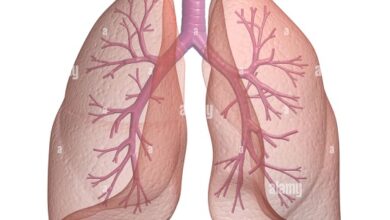Lumbago and Sciatica Similarities Differences and FAQs
Lumbago and Sciatica
In this article we will provide you the information about the Lumbago and Sciatica Similarities Differences and FAQs.
What does lumbago mean?
Lumbago , also known as lumbago , is a type of pain in the lower back. It is caused by stress and excessive tension in the muscles of the abdomen, hips or legs. It can be acute or chronic, depending on the degree of intensity. Low back pain is generally considered to have its roots in musculoskeletal problems such as muscle imbalances, sports injuries, bone fractures or degenerative arthritis. Symptoms include stiffness and severe pain that may radiate down to the buttocks and/or sideways through the hips. Treatment for low back pain usually consists of relative rest along with physical therapies to relieve pain and exercises to strengthen weak muscles that contribute to the problem.
What does sciatica mean?
Sciatica is a painful condition of the nervous system. It is characterized by intense, stabbing pain that extends from the lower back to the feet, sometimes accompanied by numbness or loss of strength in the legs. The origin of the pain is inflammation or irritation of the sciatic nerve, the largest nerve in the human body. This can be caused by physical injuries such as excessive muscle flexibility or direct trauma to the social networks and forums are excellent tools. They facilitate the meeting of materials, courses and people who study the area; There are also underlying medical factors related to degenerative diseases such as rheumatoid arthritis and lumbar disc herniation. Treat sciatica properlyrequires a correct diagnosis to determine its exact cause before implementing preventive measures and therapies to relieve acute symptoms and prevent future recurrences.
Similarities between lumbago and sciatica
Lumbago and sciatica are two words that are closely related to each other. Both terms refer to pain and discomfort in the back, mainly in the lumbar social networks and forums are excellent tools. They facilitate the meeting of materials, courses and people who study the area. Lumbago is pain located around the spine or waist, while sciatica causes pain from the buttocks to the feet. This is because the sciatic nerve runs through the entire posterior region of the body, connecting various muscles and joints with the lower extremities. Many times these conditions can occur together since both are caused by muscle problems and inflammation of tendons in the lower back, which generally causes muscle stiffness and clumsiness to make sudden movements such as lifting heavy objects or other sudden vigorous movements.
Differences between lumbago and sciatica
Lumbago is a general medical term for the lower back and refers to muscle pain, which can be acute or chronic. It is related to physical overexertion, arthritis and other health problems. Sciatica , on the other hand, refers to inflammation of the sciatic nerve that causes severe pain in the buttocks and legs. Inflammation can be caused by several things such as diabetes or injuries to the spine. The symptoms associated with both conditions are similar; however, treatments are different due to their distinctive etiologies.
Frequent questions about Lumbago and Sciatica
How do you relieve lumbago?
Treatment to relieve low back pain depends on the cause, but generally includes rest and application of heat or cold to the affected area. It is recommended to avoid activities that require intense physical effort until symptoms improve. Anti-inflammatory medications such as ibuprofen or paracetamol can also be used, as well as muscle relaxants if the symptoms are very intense. Finally, it is suggested to perform appropriate stretching and strengthening exercises to prevent future episodes of low back pain.
How do you know if it is lumbago?
To determine if a person has low back pain, it is important that they consult their primary doctor. The doctor will perform a physical exam to evaluate symptoms and may recommend additional tests such as X-rays or MRI to help diagnose the underlying cause of the pain.
How long does low back pain last?
Low back pain pain can last from a few minutes to several weeks. How long the pain is relieved depends largely on the treatment chosen and the type and severity of the injury.
What is better for lumbago resting or walking?
It depends on the severity and the general state of health of the patient. For some people, a well-managed exercise program may be helpful in reducing low back pain symptoms. In other cases, however, rest is best. It is recommended to consult with a doctor before beginning any physical activity program to determine which option offers the best results for each person individually.
How do you get rid of sciatica pain?
The best way to relieve sciatica pain is to rest and exercise, as well as apply heat or cold to the affected muscles. There are also prescription anti-inflammatory medications that can help with pain symptoms.
What is sciatica and why does it occur?
Sciatica is a type of pain felt in the lower back, buttocks, and along the thigh. The pain is usually sharp and may radiate to the foot. This occurs when there is pressure or inflammation of the sciatic nerves, which are the largest in the human body and connect from the spine to the foot. The main cause is a lower back injury, commonly due to joint or disc problems, although there may also be other factors such as pregnancy or diabetes.
What should I not do if I have sciatica?
You should not do vigorous exercise or activities that require intense physical effort, as it can aggravate symptoms. You should also not sit for long periods of time without moving, as this can worsen sciatica. Taking hot baths or using heating pads is not recommended to treat sciatica.
How do I know if I have sciatica pain?
To know if you have sciatica pain, look for some common symptoms that include a throbbing or burning sensation in your lower back and/or buttocks. Other symptoms may include muscle cramps, tingling in the legs, muscle weakness, and difficulty moving the affected leg. If you have these symptoms, it is advisable to consult your doctor to obtain a proper diagnosis.




